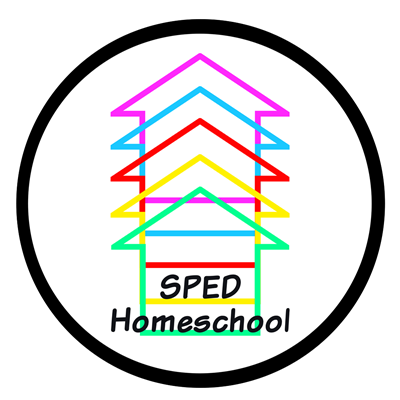How NOT to Transition to High School
By Peggy Ployhar
I wish I could say I was calm, cool, and collected when I transitioned my oldest into high school, but I wasn’t. Instead, I was a massive bundle of nerves.
To make matters worse, in my pursuit to try to turn my frenzied state into a systematic approach for the upcoming transition, I signed up to attend a “How to Homeschool High School” workshop for typical students. I subsequently left that full-day seminar almost in tears because I felt the outline I had been given to follow was a near impossible task to require from my son.
Needless to say, I have made it through the high school years now with all three of my differently wired learners.
Over the years, I have learned a lot about what is really important when transitioning into high school for an atypical student, and what you need to throw out the window OR put off until later so you don’t lose your mind.
Below are my biggest tips for transitioning, so you don’t make the same mistakes I did.
10 Tips for Making Your Homeschool Transition to High School Successful
-
Start with the Right Perspective and Make a Preliminary Plan To start your first year of homeschooling high school in a much less stressful state than I did, here are five perspective-setting points to guide you:
- Focus on where your child is now, not where you wish they would have been when starting their high school transition.
- Develop general graduation expectations you and your spouse feel your student must accomplish before you will allow them to receive a diploma.
- Include your student’s aspirations, skills, and interests in your plan.
- Don’t even look at putting together a transcript until the end of your first year. This time delay will allow you to get a better handle on what pace your child can keep and reduce stress.
- Each year, focus on three main goals and make those goals measurable and relevant to the items in your preliminary plan. Fill in with other classes and activities once you feel your student is making progress on these critical goals.
-
Take One Year at a Time It would be wonderful if we and our children had a clear-cut idea of where their lives are headed after high school, but very few do. Instead of setting up for failure with a four-year plan before you start, write your plan one year at a time with a projected outcome you can tweak along the way.
-
Develop Your Whole Child Through the Process High school years can be overloaded with academics, but non-academic education is also crucial. Teach your young adult life skills such as cooking, cleaning, yard work, budgeting, faith development, driving, and working with others to round out their education.
-
Follow the Checklist At SPED Homeschool, we have developed a high school checklist (see the attached document) to help parents remember all the important things when homeschooling a student with special educational needs.
-
School However Long It Takes High school for many students with special needs or learning disabilities extends beyond their 18th birthday. Most states allow homeschooling as long as necessary for their transition into post-high school life. Check your state’s homeschool laws, but keep in mind that the IDEA allows for special education services up to age 21 (22 in some states), so many states allow the same for homeschooled students.
-
Don’t Be Afraid to Be Creative Many parents move towards a more formal approach to education when their student enters high school. However, you don’t have to mimic traditional school. For instance, I used unit studies all through high school with my oldest child, offering the hands-on approach he needed to stay engaged.
-
Don’t Let the Transcript Hold You Captive High school is a great time for your student to discover what they love and what they don’t. Taking a less rigid approach allows your student to learn new skills without feeling enslaved to them if they lose interest. At the end of the year, it is easier to group related activities into a creatively labeled class rather than forcing your student through a subject they lost interest in.
-
Derailments Happen Sometimes, events during your student’s schooling can derail your plans. This doesn’t mean you have failed your child or that their future is bleak. When my second oldest quit school at 16, I was anything but calm. However, I have seen how this apparent derailment has worked out in God’s plan.
-
Keep the Bigger Picture Always in Front of You When you start to stress, take a step back and ensure you are not stressing over the small stuff. Pray, ask God for a renewed perspective, and focus on helping your student achieve their main three yearly goals. Trust that the rest will fall into place.
-
Stay Connected Don’t do this alone; it’s easy to think you are the only one struggling. You need fellowship! The SPED Homeschool Homeschool Heroes community is a great way to connect with other parents who understand what it’s like because they live out the same scenarios in their homeschools.
If you follow these 10 tips, you will transition into these wonderful years with your student much more gracefully than I did. These were my favorite years of homeschooling my boys because I was front and center in their lives as they moved from children to adults. I pray your years ahead will be equally blessed as you persevere into your homeschooling high school years.
Related Content





Comments